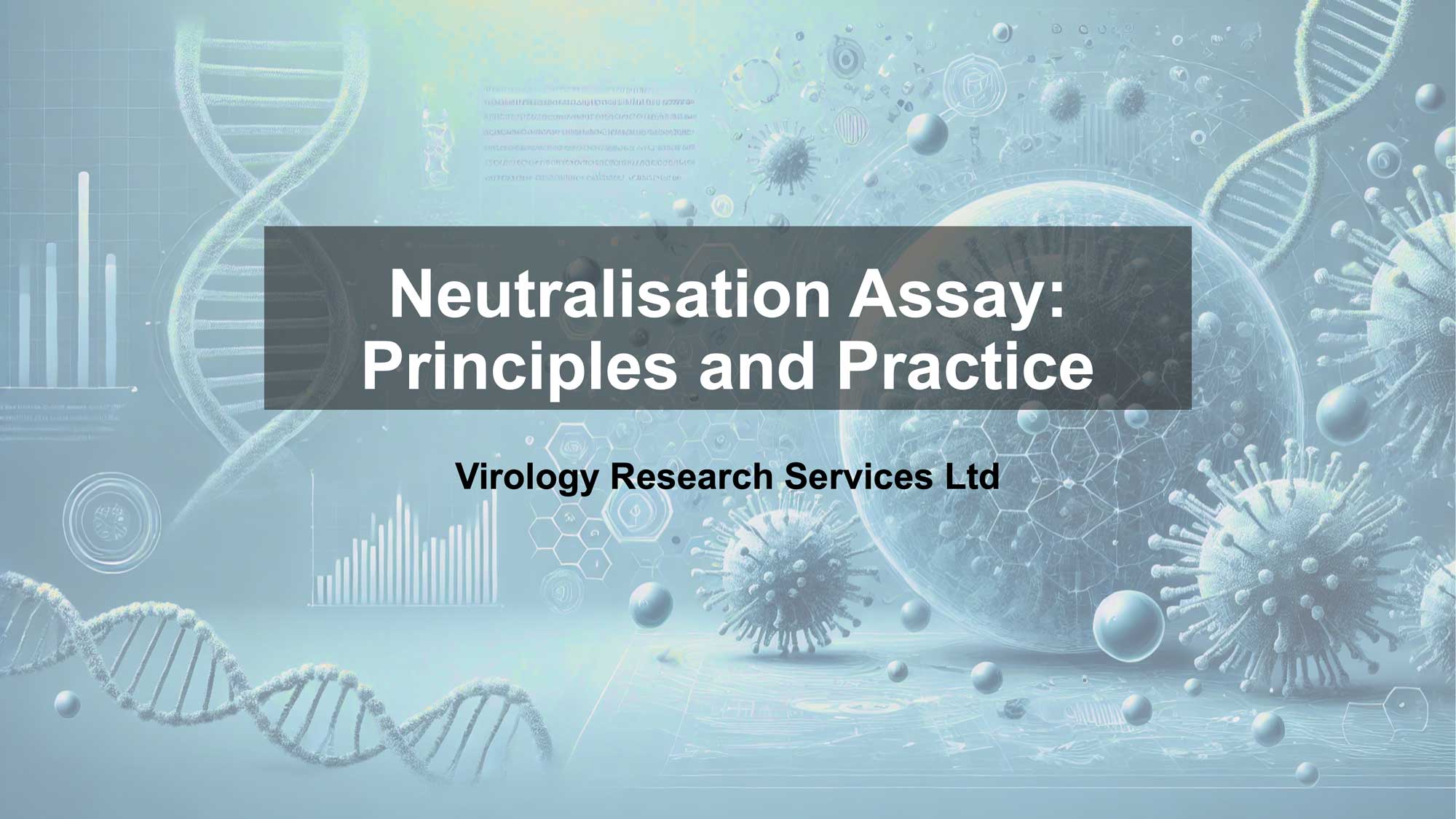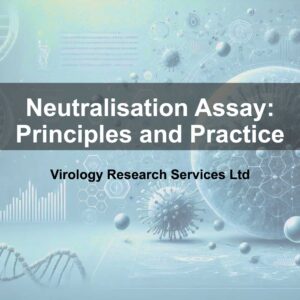Neutralisation Assay: Principles and Practice Course
Neutralisation Assay: Principles and Practice Course
£180.00
Our microneutralisation assay course is designed to provide in-depth foundational knowledge and hands-on expertise to master this technique.
Divided into seven videos, the course explores each assay step in detail – from sample preparation to data interpretation – offering a theoretical and practical framework for designing, executing, and assessing a neutralisation assay.
Course Content
At VRS, we believe that strong science comes from deep understanding. That’s why we’ve developed a series of courses to provide scientists with the principles and applications behind key techniques.
Packed with practical insights and backed by our experience as a leading CRO, each course provides the foundational knowledge needed to design robust assays, troubleshoot challenges, and draw more meaningful conclusions. Whether you’re looking to refine your methods or expand your knowledge, you’ll find clear, practical guidance grounded in real-world research.
Mastering the Microneutralisation Assay: A comprehensive course
Our microneutralisation assay course is designed to provide the in-depth foundational knowledge and hands-on expertise needed to master this technique.
What You’ll Gain:
• Solid understanding of microneutralisation assay theory
• Step-by-step guidance on setting up and executing robust experiments
• Key insights on troubleshooting common challenges and optimising experimental design
• Ability to interpret neutralisation curves and draw meaningful conclusions
• Deeper understanding of the method’s advantages and limitations
• Practical tips for refining your protocols based on real-world research
• Confidence to apply your knowledge in both academic and commercial settings
The course is divided into three sections: the first explains what a microneutralisation assay is and its applications; the second covers the key components and step-by-step execution of the experiment; and the third focuses on data analysis, interpretation, and troubleshooting common issues.
There are seven video lessons to follow:
Introduction
An introduction to the course and its content.
Definition, Applications, and Assay Overview
This section introduces the concept of neutralisation and its most common applications. We outline the key experimental stages, from sample dilution to data analysis, and provide an overview of common assay readouts. Understanding these readouts at this stage will help clarify the experimental requirements discussed in later sections.
Samples and Controls
You will learn about the most common types of samples and how to prepare them for the assay, including heat inactivation and assessing matrix interference. We also discuss the selection and use of different controls, as well as how to determine the starting concentration and an appropriate dilution range.
Viruses and Cells
You will learn how to determine the optimal virus concentration for different readouts, the concept of MOI, and how the law of mass action applies to neutralisation assays. We also discuss the key characteristics required for cells used in the assay, as well as incubation times and infection duration.
Assay Readout and Data Analysis
You will learn how detection works for the three main readouts introduced in Section 1, how to analyse the resulting data, and how to apply the best sigmoidal fit for neutralisation curves. We also cover the importance of data normalisation, constrained versus unconstrained curve fitting, and calculations for IC50 and other inhibitory concentrations. Additionally, we discuss the significance of the Hill slope, confidence intervals, and measures of uncertainty.
Assessing Assay Quality
You will learn how to assess variability, robustness, dynamic range, and assay sensitivity. We also discuss strategies for identifying and preventing edge effects, as well as methods for detecting and handling outliers.
Troubleshooting & Course Wrap-Up
In this final video, we address common issues that may arise during an assay run, discuss possible causes, and suggest solutions. We also share our final thoughts on this complex assay and close the course.


